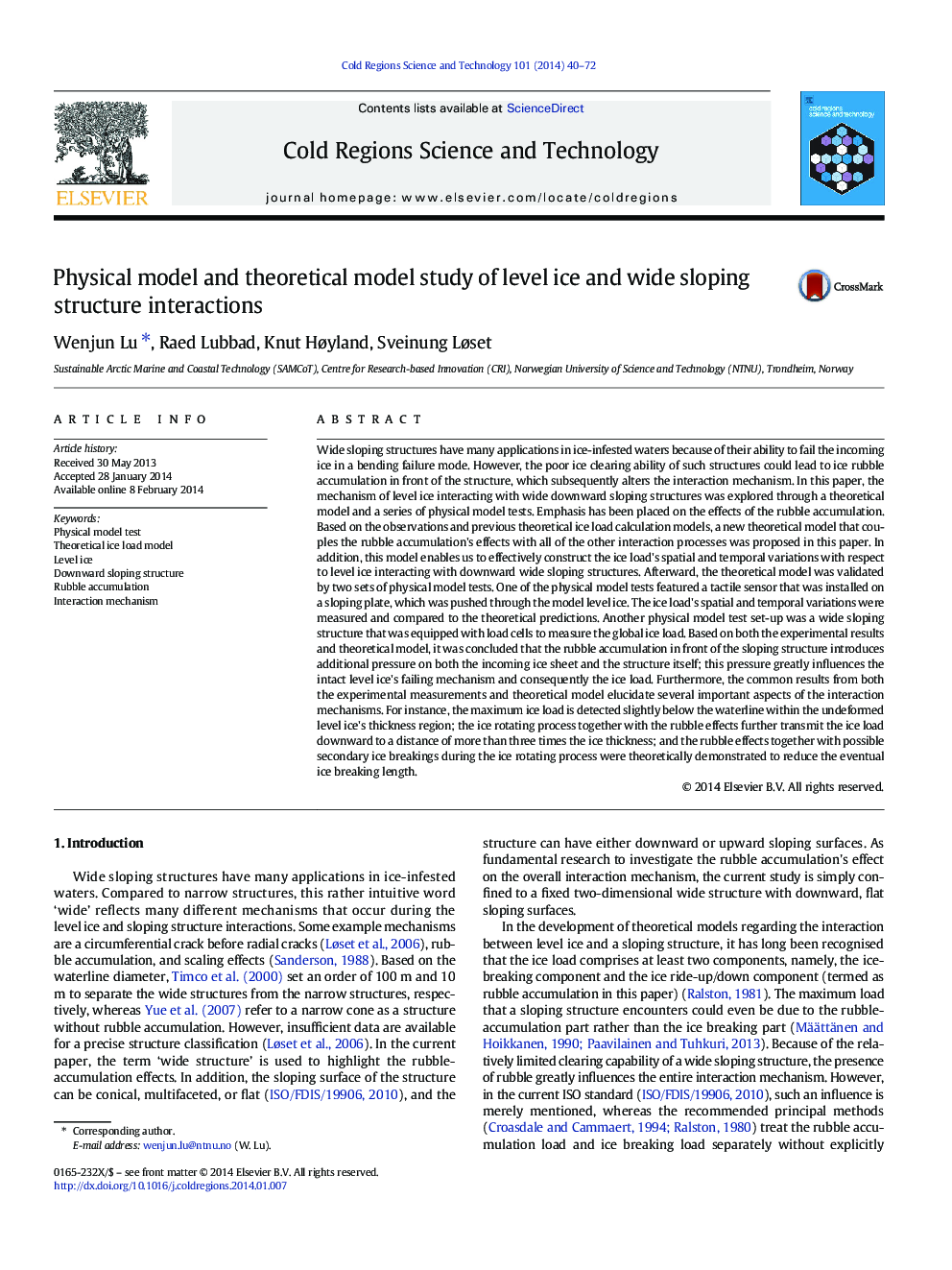| کد مقاله | کد نشریه | سال انتشار | مقاله انگلیسی | نسخه تمام متن |
|---|---|---|---|---|
| 4675756 | 1634461 | 2014 | 33 صفحه PDF | دانلود رایگان |
• A theoretical level ice and wide sloping structure interaction model was developed.
• Physical model tests and other existing theoretical models were utilised for validation.
• The importance of rubble accumulation was demonstrated.
• The contribution of different load components was illustrated.
• Influence of possible secondary ice breakings is discussed.
Wide sloping structures have many applications in ice-infested waters because of their ability to fail the incoming ice in a bending failure mode. However, the poor ice clearing ability of such structures could lead to ice rubble accumulation in front of the structure, which subsequently alters the interaction mechanism. In this paper, the mechanism of level ice interacting with wide downward sloping structures was explored through a theoretical model and a series of physical model tests. Emphasis has been placed on the effects of the rubble accumulation. Based on the observations and previous theoretical ice load calculation models, a new theoretical model that couples the rubble accumulation's effects with all of the other interaction processes was proposed in this paper. In addition, this model enables us to effectively construct the ice load's spatial and temporal variations with respect to level ice interacting with downward wide sloping structures. Afterward, the theoretical model was validated by two sets of physical model tests. One of the physical model tests featured a tactile sensor that was installed on a sloping plate, which was pushed through the model level ice. The ice load's spatial and temporal variations were measured and compared to the theoretical predictions. Another physical model test set-up was a wide sloping structure that was equipped with load cells to measure the global ice load. Based on both the experimental results and theoretical model, it was concluded that the rubble accumulation in front of the sloping structure introduces additional pressure on both the incoming ice sheet and the structure itself; this pressure greatly influences the intact level ice's failing mechanism and consequently the ice load. Furthermore, the common results from both the experimental measurements and theoretical model elucidate several important aspects of the interaction mechanisms. For instance, the maximum ice load is detected slightly below the waterline within the undeformed level ice's thickness region; the ice rotating process together with the rubble effects further transmit the ice load downward to a distance of more than three times the ice thickness; and the rubble effects together with possible secondary ice breakings during the ice rotating process were theoretically demonstrated to reduce the eventual ice breaking length.
Journal: Cold Regions Science and Technology - Volume 101, May 2014, Pages 40–72
